- Joined
- Jan 1, 2018
- Messages
- 1,211
This is the out-rigger to my sliding table saw.
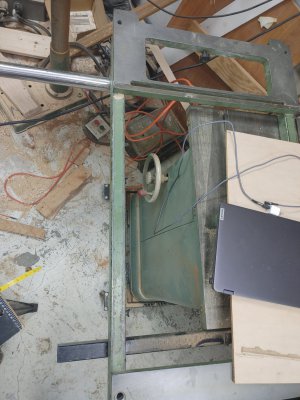
The two tapered holes at the top and bottom of the picture are where the fence mounts to the sliding table. I do not have the fence or the pins that go into these holes. The bottom hole is an eccentric for adjusting the fence square to the blade.
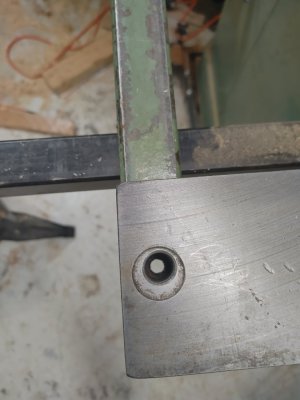
I need to make the tapered pins that go in these holes. How do I figure out/replicate the taper I need for cutting new pins on the lathe?
The fixed hole is .609" at the top wide part of the taper.
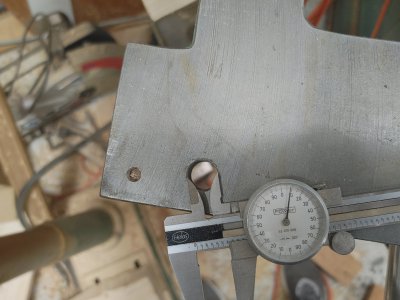
It is .553" dia at the bottom of the hole.
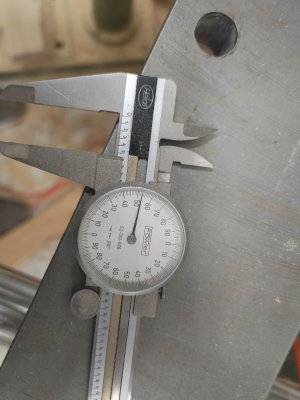
The hole is 1.53" deep (the thickness of the table).
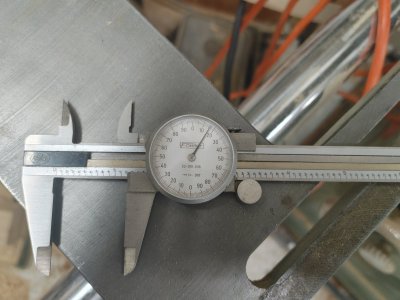
The eccentric hole appears to be a steeper taper and has a ridge about 3/4 of the way down the hole making it much harder to measure.
I am tempted to drive a soft wood dowel (or maybe a candle stick?) in the eccentric hole, mount the dowel in the lathe then set the compound slide angle to closely match the compressed wood taper.
Any suggestions would be appreciated!

The two tapered holes at the top and bottom of the picture are where the fence mounts to the sliding table. I do not have the fence or the pins that go into these holes. The bottom hole is an eccentric for adjusting the fence square to the blade.

I need to make the tapered pins that go in these holes. How do I figure out/replicate the taper I need for cutting new pins on the lathe?
The fixed hole is .609" at the top wide part of the taper.

It is .553" dia at the bottom of the hole.

The hole is 1.53" deep (the thickness of the table).

The eccentric hole appears to be a steeper taper and has a ridge about 3/4 of the way down the hole making it much harder to measure.
I am tempted to drive a soft wood dowel (or maybe a candle stick?) in the eccentric hole, mount the dowel in the lathe then set the compound slide angle to closely match the compressed wood taper.
Any suggestions would be appreciated!
Last edited:


